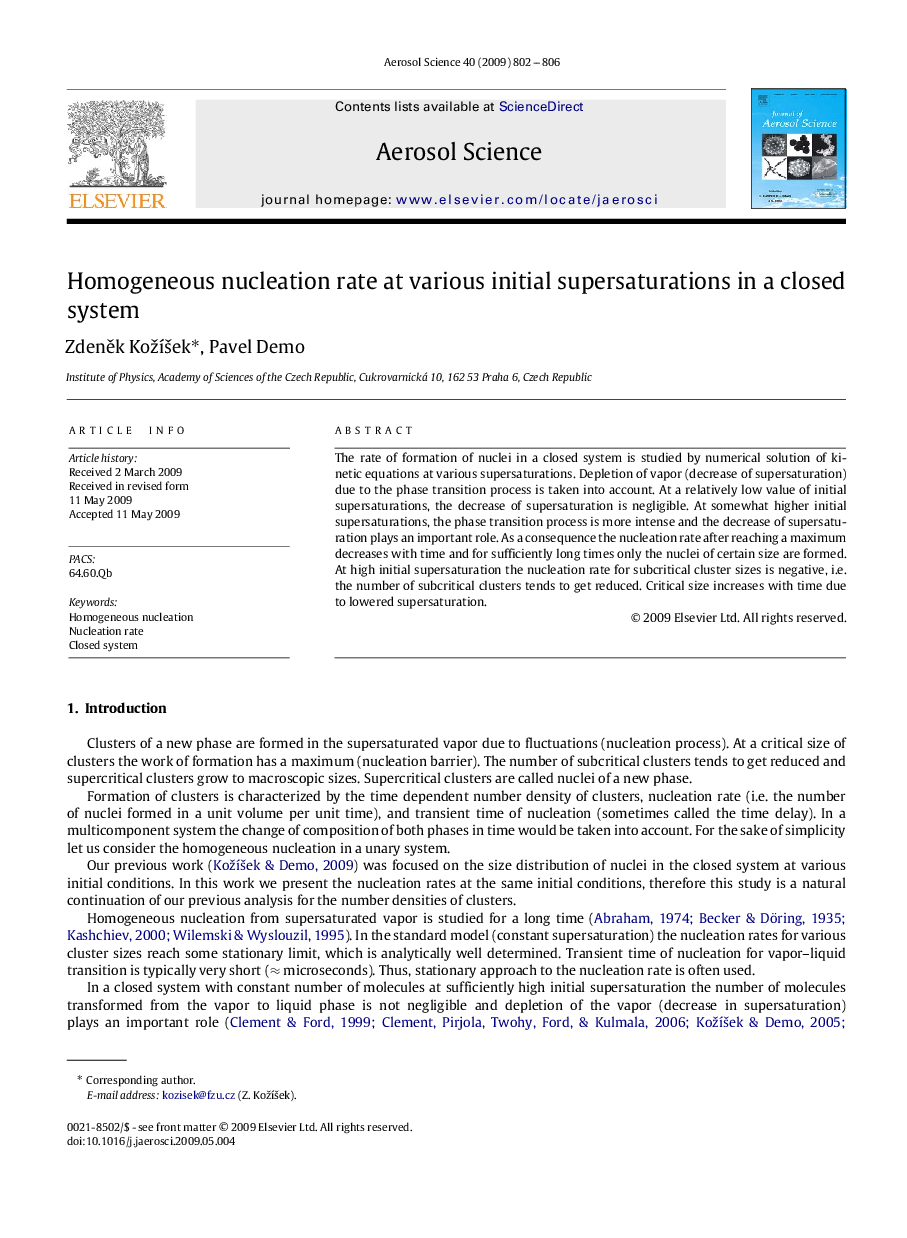| Article ID | Journal | Published Year | Pages | File Type |
|---|---|---|---|---|
| 4452959 | Journal of Aerosol Science | 2009 | 5 Pages |
The rate of formation of nuclei in a closed system is studied by numerical solution of kinetic equations at various supersaturations. Depletion of vapor (decrease of supersaturation) due to the phase transition process is taken into account. At a relatively low value of initial supersaturations, the decrease of supersaturation is negligible. At somewhat higher initial supersaturations, the phase transition process is more intense and the decrease of supersaturation plays an important role. As a consequence the nucleation rate after reaching a maximum decreases with time and for sufficiently long times only the nuclei of certain size are formed. At high initial supersaturation the nucleation rate for subcritical cluster sizes is negative, i.e. the number of subcritical clusters tends to get reduced. Critical size increases with time due to lowered supersaturation.
